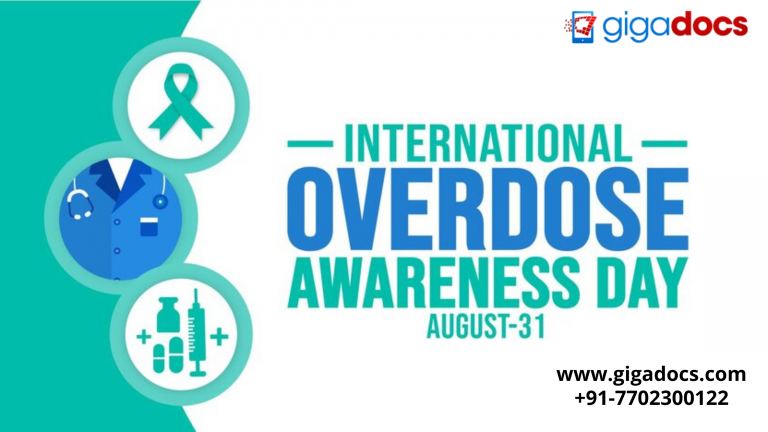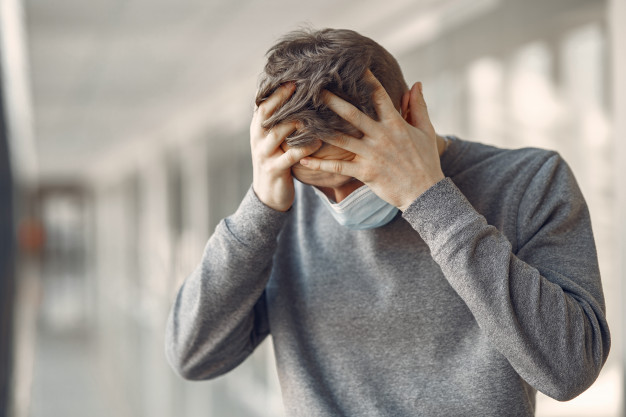Drug overdose cases have increased in recent years, particularly among India’s north and north-eastern regions. The causes are many, and in many instances, the overuse of opioids has contributed to a serious public health catastrophe. Many drugs are often used for medical purposes, especially after surgery, to alleviate the pain. Of all the natural, semi-synthetic, and synthetic drugs, fentanyl is particularly hazardous due to its substantially higher potency than other opioids.
As we observe International Overdose Awareness Day, let us understand more about an opioid, the different synthetic opioids, their medical usage, opioid overdose, symptoms of opioid dose, and how to prevent an opioid overdose.
What is an Opioid?
Opioids- a class of potent medications commonly used to manage pain, including post-surgical pain, cancer-related pain, and chronic pain conditions, work by binding to opioid receptors in the brain and spinal cord. Synthetic opioids like Morphine, Fentanyl, and Tramadol can have serious and potentially life-threatening consequences; let’s learn more about them-
Morphine:
- Morphine is a natural opioid and one of the most potent pain-relieving medications.
- It is often used to manage severe pain, particularly after surgery or palliative care.
- Morphine can be administered in various forms, including oral tablets, intravenous (IV) injections, and extended-release formulations.
Fentanyl:
- Fentanyl is a synthetic opioid significantly more dangerous than morphine or heroin.
- It is used medically for pain management, including post-surgical and cancer pain.
- It may be administered via transdermal patches, lozenges, or intravenous injections.
- The potency of fentanyl poses a high risk of overdose, and even small amounts can be lethal.
Tramadol:
- Tramadol is a synthetic opioid for acute pain (such as post-surgical pain) and chronic pain conditions (like osteoarthritis or back pain).
- Tramadol is available in immediate-release and extended-release formulations and is less potent than morphine or fentanyl.
- It carries a lower risk of abuse and dependence than other opioids.
Side-Effects of an Opioid Overdose
- Adverse Reactions: Overdosing on medication can lead to severe adverse reactions, including nausea, vomiting, diarrhea, dizziness, confusion, and excessive sweating.
- Organ Damage: Certain drugs, especially those metabolized by the liver or excreted by the kidneys, can cause organ damage when taken in excess. For example, high doses of tramadol can lead to liver failure.
- Respiratory Depression: Opioids can cause respiratory depression when taken excessively. This can lead to slowed or stopped breathing, which is life-threatening.
- Cardiac Issues: Some drugs can affect the heart, leading to irregular heart rhythms, high blood pressure, or even heart attacks.
- Central Nervous System Depression: Sedative medications, specifically morphine and fentanyl, can all have sedative effects, causing extreme drowsiness, confusion, and a loss of consciousness.
- Death: In the worst cases, an overdose can be fatal, especially if it leads to respiratory failure, cardiac arrest, or severe organ damage.
Symptoms of a Drug Overdose
- Extreme Drowsiness or Loss of Consciousness: The person may appear drowsy, unconscious, and unresponsive.
- Pale Skin: The person’s skin may appear pale and cold to the touch.
- Limpness or Muscle Weakness: Muscles may become extremely relaxed, and the person may be unable to stand or hold their head up.
- Blue or Gray Lips or Fingernails: A bluish or grayish discoloration of the lips, fingernails, or skin may happen due to insufficient oxygen.
- Shallow or Slow Breathing: Respiratory depression, when the person’s breathing may become slow, shallow, irregular, or even stop altogether.
- Pinpoint Pupils: Opioid overdose often causes the pupils to constrict to pinpoint size.
How to Prevent an Opioid Overdose
Preventing an Opioid overdose is essential to ensure its safe and effective use. Here are several strategies and precautions to help prevent an opioid overdose:
- Never share your prescription opioids with others; do not take opioids prescribed to someone else.
- Follow your healthcare provider’s instructions for how to take your medication, including whether to take it with food or water.
- Do not consume alcohol or use other substances, such as sedatives or illicit drugs, in combination with opioids, as this can increase the risk of respiratory depression and overdose.
Preventing opioid overdoses requires a combination of individual responsibility and doctors’ insight to reduce the risk of overdose and increase the chances of a successful response if an overdose occurs.
In India, Opioids are given as a pain reliever medication, especially after surgery. However, non-medical use is often dangerous and adversely affects the one taking it and friends and family.
Have you downloaded the Gigadocs app to read more about the harmful effects of opioid consumption, seek medical help for drug overdose, and book lab tests & health checkup packages with Gigadocs?
Download the Gigadocs app from here-
IOS App – apple.co/2W2iG4V
Android App – bit.ly/33AQoRC
To know more e-mail, at info@gigadocs.com




